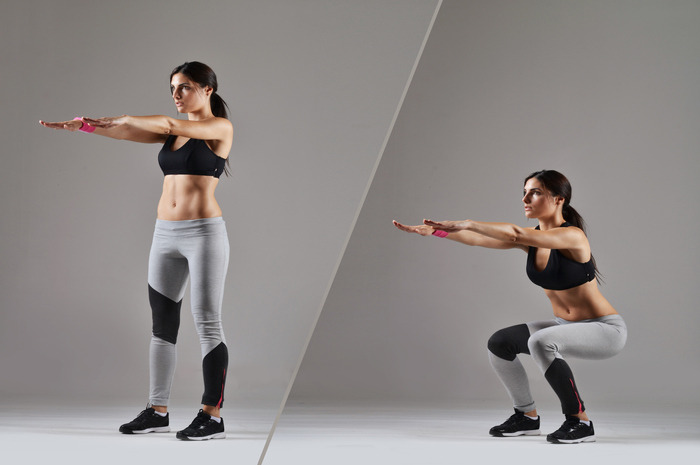Best Exercises To Get Ready For The Ski Season Now
Best Exercises to Get Ready for the Ski Season Now
If you plan the hit the slopes by December, you should start physically getting ready by October, says Kevin Moody, a retired physical trainer with Adirondack Medical in Saranac Lake and with the U.S. Olympic Committee. How long it will take to adjust the body depends on the type of skier and how much training time he or she can incorporate into their daily routine. The best program is a progressive one, he adds. "Do a minimum of four days a week – two for strength training and two for conditioning."
Interval training
"In the old day people did long runs to get in shape," Moody says. "Now we know this is not the kind of training for alpine skiing. It's a lot more about anaerobic exercises." Do more interval training, he adds. They don't have to be regimented or timed, but do rotate running, jogging and sprinting for a few minutes or seconds at a time.
Eccentric training
"Eccentric" refers to when force is produced while the muscle lengthens. It's crucial to work this phase of your training and pay attention to it because alpine skiing is eccentric, Moody says. The downward pressure helps imitate the moves you're making on the slopes while turning. People incorporate eccentric training into a workout to build strength, for muscle coordination and improving range of motion.
Any single-leg moves
"It's very important to do single-leg exercises to improve your balance," Moody says. "While you're skiing, the majority of the time you are weighted on just one leg, even though you may feel like both of your legs are on the ground," he adds.
Squats
Squats are often overlooked, but they can be tremendously helpful, if done right, Gates Lloyd from Arapahoe Basin in Colorado says. They strengthen all of the muscles around the back and engage all parts of the body that you're actively using on the slopes. Focus, if you can, on one-legged squats, he adds. Do 30 dips on each leg. Make them even more challenging and add an unstable surface for the leg on the floor, he adds.
Use the stairs
You don't have to go to the gym to get ready for skiing – use the stairs whenever possible. "This is really going to change the way your legs work," Lloyd says. You become acutely aware of how your feet work and when something doesn't feel right.
Bosu Ball or Dyna Disk
You have to pay attention to the muscles on your feet, Lloyd says. Step on a Bosu Ball or a Dyna Disk whenever you're doing any exercises that require you to be standing. This is a great way to work on your balance and coordination. To know if you need more help with them, ski slowly. "Skiing fast allows you to get away with a lot of errors," Lloyd says.
Lunges
Lunges are the go-to exercise for the legs. When done right, they can be very effective; otherwise you put unnecessary strain on your joints. You can modify the exercise to fit your fitness level. Hold weights as you move. You can hold a rubber band over your head and pull it apart. This added balance component activates the shoulder muscles, giving you a nice line between the thighs and the shoulders.
Step-ups
Step-ups strengthen your thighs, buttocks, and calves. Also, your legs go through a full range of motion, which is pivotal for skiing. Calves, hamstrings, quadriceps and glutes are trained when you do a lot of reps. Add dumbbell curls to make them a little more challenging and to more actively engage the core.
The woodchopper
Diagonal movements like the woodchopper with exercise tubing train core muscles to integrate with upper and lower body. With these moves, you don't have to do hundreds of crunches; just a few done well will do the trick. With your side to the cable, grab the handle with one hand. Your feet should be shoulder width apart. In one motion, pull the handle down and across your body to your front knee. Rotate your torso. Always keep the back and arms straight. Tighten the core.
Medicine balls
Any rotation moves while holding medicine balls will help strengthen your torso, Moody says. Whatever core moves you're doing, make sure to not be doing them in a sitting position. "I like to work the abs while standing up because this is more specific to skiing," he adds.
Plyometrics
"Jumping and hopping exercises will help you develop explosiveness in the quads and glutes," Moody says. Trying to isolate a single muscle group is not the best idea because your body works as one when skiing – all muscles are activated and work together to keep you balanced, he adds. Do 3 sets of 12 box jumps with the box being slightly taller than the top of your knees.
Circuits
Go back to the basics. "I usually have people do upper body exercise, followed by core moves and then lower body exercise," Moody says. The kind of exercise is less of an issue. Repeat the routine several times. "You can go for reps or time at each station," he adds. The important thing is to move your body and not work on just one part of it.












